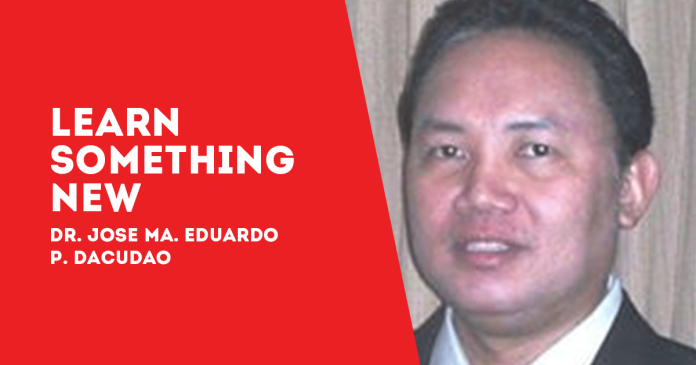
BY DR. JOSE MA. EDUARDO P. DACUDAO
FOR MOST of the history of humanity, no one has thought to legislate a national language.
There have been customs, it is true. For example, the Roman Empire customarily used Latin in its government communications and schools, but it never made laws that in effect made Latin as the only official or national language of the Roman Empire, or required that a citizen of Rome must be able to speak Latin. (Many Romans even admired and used the Greek language over Latin, including some Emperors.)
At face value, the legislation of a national language sounds unnatural and weird. Humanity has always spoken diverse languages; that is the natural human condition. One may like it, or may not like it, but for countless centuries no one had ever thought of lawfully making one language the only official language for a state.
It started during the ultra-nationalistic French Revolution and its aftermath, Napoleonic France. Nationhood after the French revolution was based on the idea of One Nation – One Language, or Unity in Uniformity. To be a citizen of France one had to know French.
Just as the English language has William Shakespeare and Russian has Alexander Pushkin, the French language has the early 17th century poet François de Malherbe, who through his poetic writings created a standard for the language.
In 1635, Cardinal Richelieu created the L’Académie Française (French Academy), whose primary purpose was to standardize the French language.
In 1795, during the French Revolution, the French Academy was incorporated into the substantially more powerful Institut de France. This institute acts similarly to a national language commission (such as the Philippines’ Komisyon ng Wikang Filipino) that dictates what is to be regarded as French or not, and to impose what it regards as French in all of France.
Napoleonic France set a mono-cultural standard that was soon followed by most of the rest of the world. At the extreme end was probably Czarist Russia. Under Tsar Alexander III (1845-1894), emperor of Russia in 1881-1894, the government dogmatically imposed Russianness in the traditionally multi ethnic Russian Empire. Schools and government organizations were directed to use only the Russian language. Publications in the Empire’s non-Russian languages were banned or outlawed.
Violators, who might have just wanted to communicate in their native languages, faced state sanctions and imprisonment. (In the Philippines, this Pavlovian conditioning scenario repeats itself in the form of Filipino teachers fining tabula rasa children that speak in a non-Tagalog tongue and in the language shaming of non-Tagalog accents in the national and social media, and in the streets and public places of Metro Manila. Thus have we created several generations of post-WW 2 self-hating Visayans, Ilocanos, Pangasinenses, Kapampangans, Bicolanos, etc and et al.)
The 19th century and the first half of the 20th century was the age of ‘nationalism,’ specifically the idea of One Nation – One Language.
In the early 20th century, Chinese nationalists took up the idea of Unity in Uniformity. The Kuomintang (Nationalist Party) was formed in 1912, from the merger of several nationalist organizations that had just overthrown the last imperial Chinese dynasty (the Qing). Specifically the Mandarin dialect spoken in Beijing was made into the basis of the modern written language, Baihua; and under the nationalist regime this began to be taught in Chinese schools after 1917.
At that time, the Philippines had never experienced such an unnatural imposition as a national language. However, probably spurred on by the European examples and that of neighboring China, copycat Filipinos in the 1930s also took up the ‘national language’ craze of the world.
Specifically Quezon’s pre -World War II Nacionalista Party (Partido Nasyonalista) actively promoted the idea, essentially running a political propaganda campaign based on a one-nation one-language ideology.
From this historical contextual perspective, all these would retrospectively look like a hogwash of a joke, if it did not have such tragic consequences on the ethnolinguistic identities of the peoples of the Philippines. The idea of one national language for all Filipinos originally was as foreign to us as baloney sandwich. (To be continued)/PN

